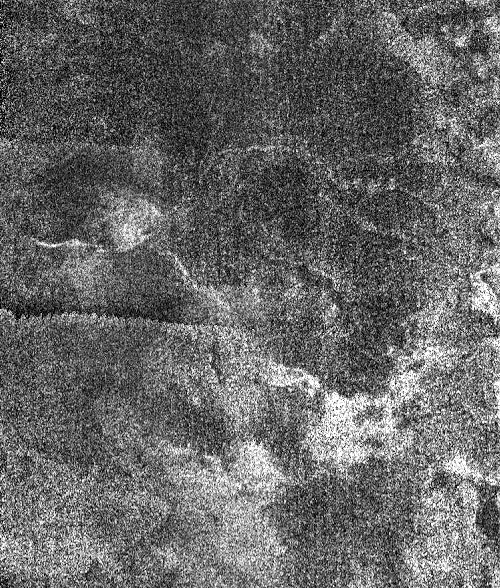When the Cassini spacecraft swept past Titan October 26, its imaging radar scribed a long line across the moon’s surface, piercing the haze and revealing the surface. The features it spotted include a lava dome 60 miles (100 kilometers) in diameter. The radar also detected what project scientists believe is a lava flow at least 90 miles (150 km) long. In both cases, the molten element in what scientists call cryovolcanism is ice, not rock.
Regarding the lava dome, Ralph Lorenz of the University of Arizona and a member of the radar instrument team pointed out its resemblance to the pancake domes seen on Venus, which are about a third the size. “Whether Titan has many more of these, we don’t know,” he says and offers a caution: “It’s still too early to say that it isn’t something else entirely.” Lorenz reported on the discovery November 8 at the Division for Planetary Sciences meeting in Louisville, Kentucky.
At the other end of the radar instrument’s swath, several thousand miles (km) away, Lorenz describes another feature: “It’s a long, somewhat branching feature with lobes. It may be something that welled up from a network of cracks that are hidden from the radar.” But, he says, the composite picture is compelling. “Putting this together with the dome suggests that Titan is a place that has had some kind of volcanic activity.”
Bright regions in radar images are those that scatter the radar signal strongly back toward the spacecraft. Brightness may come from the material’s physical or chemical properties. Another cause is that the ground has surfaces facing the radar that are about the size of the radar waves. In Cassini’s case, this is 2.2 centimeters, or about 1 inch. But project scientists also point out that clean ice containing bubbles also might make a good reflector. So the jury’s still out, although the most popular explanation among scientists right now is roughness.
Titan’s surface perplexes planetary scientists. As imaging team leader Carolyn Porco of the Space Science Institute freely admits, “Titan is basically a puzzle to us.”











